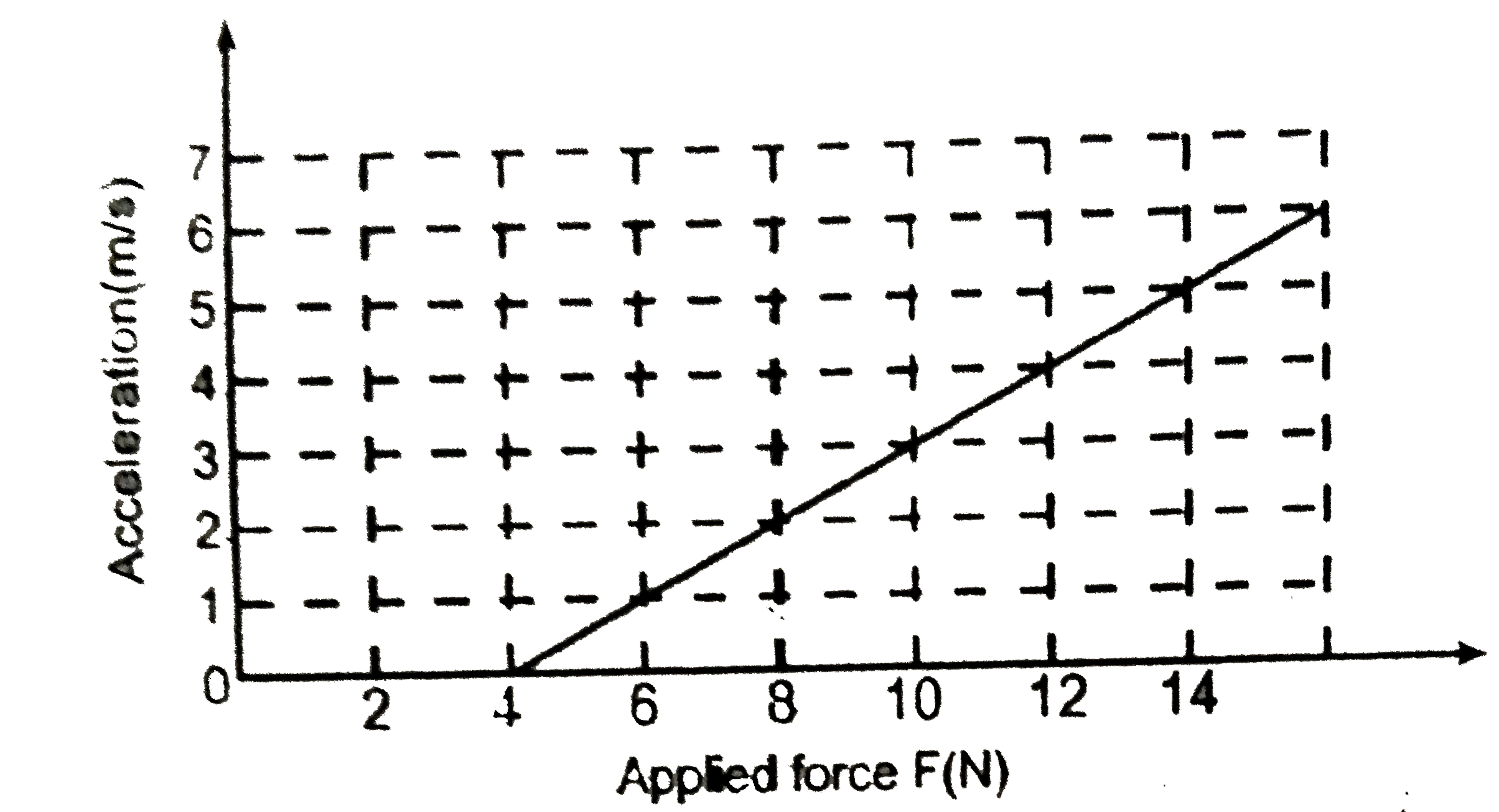A block of mass 500 g is at rest on a horizontal table. What steady force is required to give the block a velocity of
To solve the problem step by step, we will follow these steps:
Step 1: Convert the mass into kilograms
The mass of the block is given as 500 g. We need to convert this into kilograms because the standard unit of mass in physics is kilograms (kg).
Mass (m)=500 g=5001000 kg=0.5 kg
Step 2: Identify the initial and final velocities
The block is initially at rest, so the initial velocity (u) is:
u=0 cm/s
The final velocity (v) is given as:
v=200 cm/s
Step 3: Convert the final velocity into meters per second
We need to convert the final velocity from cm/s to m/s:
v=200 cm/s=200100 m/s=2 m/s
Step 4: Calculate the acceleration
We know that the acceleration (a) can be calculated using the first equation of motion:
v=u+at
Rearranging this formula to solve for acceleration (a):
a=v−ut
Substituting the values we have:
a=2 m/s−0 m/s4 s=2 m/s4 s=0.5 m/s2
Step 5: Calculate the force using Newton's second law
According to Newton's second law, the force (F) can be calculated using the formula:
F=ma
Substituting the values of mass (m) and acceleration (a):
F=0.5 kg×0.5 m/s2=0.25 N
Step 6: Convert the force into dynes (if needed)
Since the problem might require the answer in dynes, we can convert Newtons to dynes.
1 N = 10^5 dynes, so:
F=0.25 N×105 dyne/N=25000 dyne
Final Answer
The steady force required to give the block a velocity of 200 cm/s in 4 seconds is 25000 dynes.
---
The mass of the block is given as 500 g. We need to convert this into kilograms because the standard unit of mass in physics is kilograms (kg).
The block is initially at rest, so the initial velocity (u) is:
We need to convert the final velocity from cm/s to m/s:
We know that the acceleration (a) can be calculated using the first equation of motion:
According to Newton's second law, the force (F) can be calculated using the formula:
Since the problem might require the answer in dynes, we can convert Newtons to dynes.
The steady force required to give the block a velocity of 200 cm/s in 4 seconds is 25000 dynes.
Topper's Solved these Questions
- NEWTON'S LAWS OF MOTIONBook:CBSE COMPLEMENTARY MATERIALChapter:NEWTON'S LAWS OF MOTIONExercise:5 Marks Questions
Explore 2 Videos
- NEWTON'S LAWS OF MOTIONBook:CBSE COMPLEMENTARY MATERIALChapter:NEWTON'S LAWS OF MOTIONExercise:Laws Of Motion
Explore 20 Videos
- NEWTON'S LAWS OF MOTIONBook:CBSE COMPLEMENTARY MATERIALChapter:NEWTON'S LAWS OF MOTIONExercise:2 Mark Questions
Explore 14 Videos
- MECHANICAL WAVESBook:CBSE COMPLEMENTARY MATERIALChapter:MECHANICAL WAVESExercise:MCQ
Explore 20 Videos
- PROPERTIES OF MATTERBook:CBSE COMPLEMENTARY MATERIALChapter:PROPERTIES OF MATTERExercise:MULTIPLE CHOICE QUESTIONS (MCQs)
Explore 20 Videos
Similar Questions
A block of mass 10kg is placed on a horizontal surface as shown in the figure and a force F=100N is applied on the block as shown, in the figure. The block is at rest with respect to ground. If the contact force between block and ground is 25n (in Newton) then value of n is : (Takeg=10m/s2)

View SolutionA block of mass 4 kg is resting on a horizontal table and a force of 10 N is applied on it in the horizontal direction. The coefficient of kinetic friction between the block and the table is 0.1. The work done in √20 s
View Solution
Knowledge Check
A block is placed on a horizontal table. Identify the force of action
Aweight of blockBsupport of table on the blockCeither (a) or (b)Dneither (a) nor (b).A block of mass 1kg is at rest on a horizontal table. The coefficient of static friction between the block and the table is 0.5 . The magnitude of the force acting upward at an angle of 60∘ from the horizontal that will just start the block moving is.
A5NB202+√3NC202−√3ND10NA horizontal force of 20 N is applied to a block of 10 kg resting on a rough horizontal surface. How much additional force is required to just move the block, if the coefficient of static friction between the block and the surface is 0.4 ?
A15.5 NB10.3 NC8.5 ND19.2 N
A block of wood is lying at rest on a table. What can be said about the force (s) acting on it?
View SolutionA block of unknown mass is at rest on a rough, horizontal surface. A horizontal force F is applied to the block. The graph in the figure shows the acceleration of the block with respect to the applied force. The mass of the block is

View SolutionA block of 50 kg rests on a table. A horizontal force of 294 N is required to just move the block, the coefficient of static friction between the surfaces in contant (μs) is
View SolutionA block of mass 2 kg rests on a horizontal surface. If a horizontal force of 5 N is applied on the block, the frictional force on it is (take,uk=0.4,μs=0.5)
View SolutionA 10kg block is initially at rest on a rough horizontal surface. A horizontal force of 60N is required to set the block in motion . After it is in motion , a horizontal force of 50N is required to keep the block moving with constant velocity . The ratio coefficient of static and kinetic friction is
View Solution